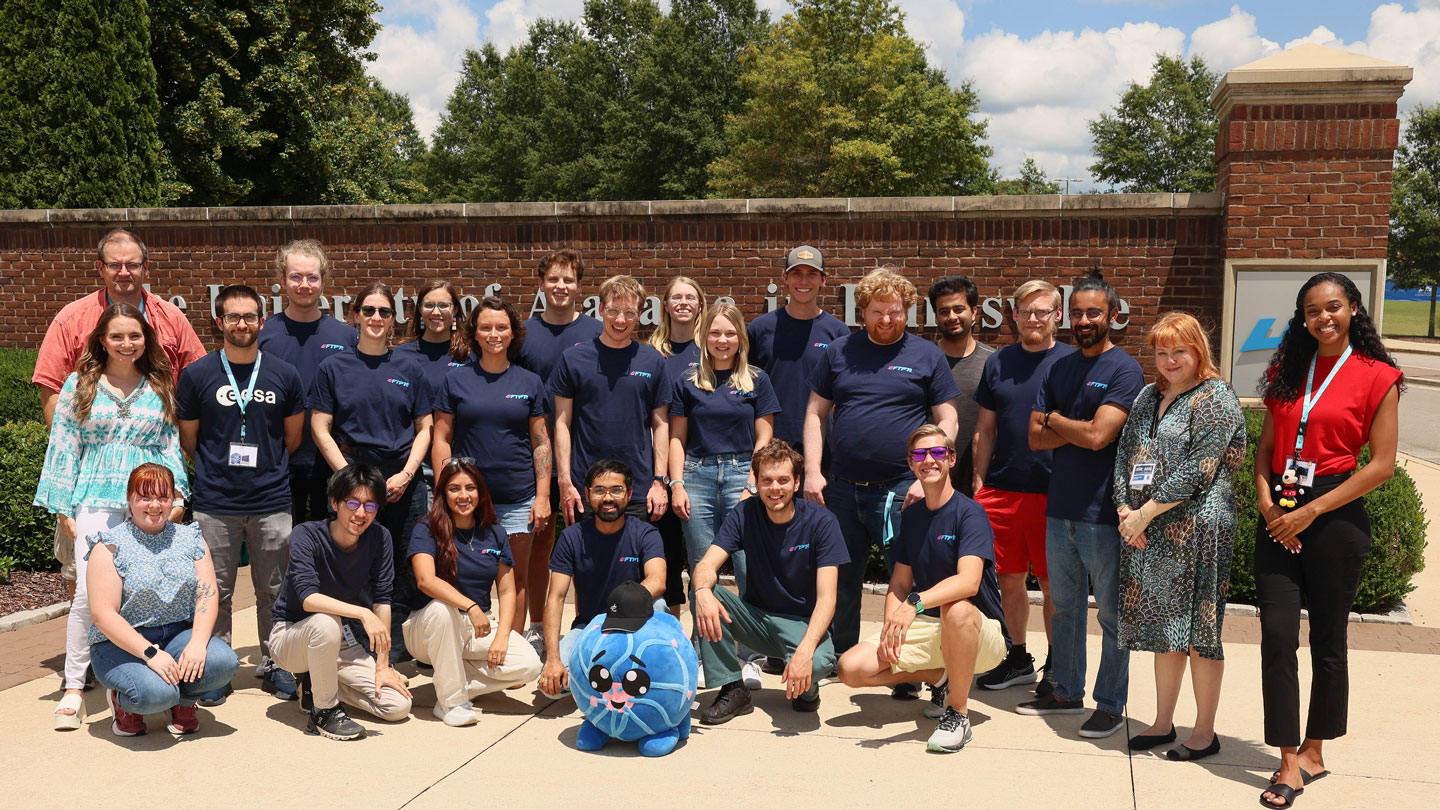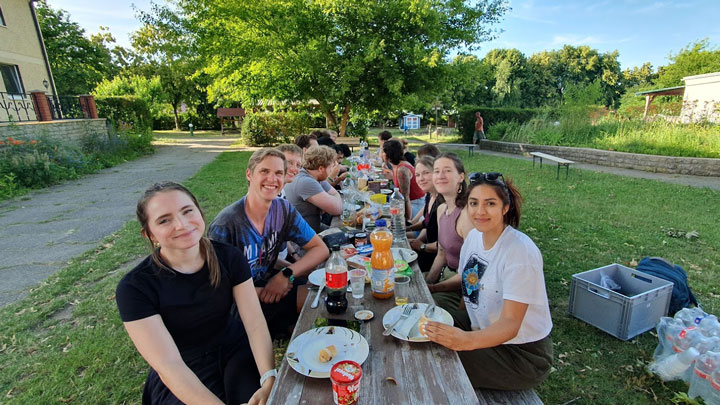
Students from Germany and the Southeastern U.S. arrive on the UAH campus to take part in International Space Camp, exploring space weather science and its global impacts.
Michael Mercier | UAH
The University of Alabama in Huntsville (UAH), a part of The University of Alabama System, recently welcomed students from across the Southeastern U.S. and (ISWC), a two-week immersive program exploring space weather science and its global impacts. The U.S. portion of the event was hosted by the UAH Center for Space Plasma and Aeronomic Research (CSPAR) and featured hands-on research projects on topics such as space plasma simulations, artificial intelligence tools for modeling electromagnetic waves, turbulence in space environment and cosmic ray modulation in the heliosphere.
The ISWC program was launched in 2011 for students to learn about space physics through lectures, hands-on projects, experiments and excursions. Seventeen students, eight from Germany and nine from the Southeastern U.S., gathered on the UAH campus to take part in more than 20 expert-led lectures and four in-depth group projects organized by CSPAR. The program is part of the Future Technologies & Enabling Plasma Processes (FTPP) initiative, a National Science Foundation (NSF)-funded cooperative agreement led by Dr. Gary Zank, director of CSPAR and FTPP principal investigator.
“The International Space Weather Camp 2025 was not just an academic program, it was an immersive, interdisciplinary experience that brought together students and researchers from around the world to explore the frontiers of heliophysics and space weather,” says Ashutosh Giri, a Ph.D. student in the Department of Space Science at UAH. “Over several weeks, we engaged in high-level lectures from leading scientists, collaborated on team-based research projects and applied advanced analytical techniques to real spacecraft data.”

Courtesy Laura Provenzani/CSPAR
The camp is a partnership between FTPP at UAH and the German Aerospace Center (DLR) at the University of Rostock, taking advantage of historical ties between Huntsville and the state of Mecklenburg-Vorpommern in Germany in the development of rockets, missiles and eventually manned space flight. The primary initiators of the ISWC were Zank and former Vice President of Research at UAH, Dr. John Horack, together with colleagues at the DLR in Neustrelitz, Dr. Wolfgang Mett, Dr. Holger Wandsleb and Dr. Wolfgang Schareck, Rektor of the University of Rostock.
International Space Weather Camp course topics included cosmic ray particle transport theory, plasma physics, solar physics, heliospheric physics, computer simulations for modeling and understanding local space weather, as well as its impact on the Earth’s atmosphere, satellites and space vehicles.
“My final project on turbulence intermittency near interplanetary shocks allowed me to apply statistical diagnostics to study energy dissipation in the solar wind, connecting textbook concepts with in-situ spacecraft observations,” Giri notes. “Beyond the science, the program fostered a strong culture of teamwork, communication and international cooperation. ISWC 2025 solidified my passion for space physics and gave me both the technical and interpersonal tools to contribute meaningfully to future heliophysics research.”
The U.S. portion of the camp followed two weeks in Neustrelitz, Germany, where students participated in lectures and projects at the DLR. Together, these four weeks offered a rare, international collaboration between students and scientists working to better understand and prepare for the effects of space weather on modern technology.
“Getting to be a part of the ISWC internship has been a very challenging, but also an incredibly rewarding, experience,” says camp participant Malana Furr, a UAH undergraduate and rising senior. “I come from a background in mathematics, and it was interesting to see how much math plays a role in space science and plasma physics. I had the opportunity to make friends and gain experience working towards a common goal through team collaboration for our group projects.”
During their stay in Huntsville, the group also explored local landmarks, including the U.S. Space & Rocket Center, Big Spring Park and Lowe Mill Arts & Entertainment, while a weekend excursion took participants to NASA’s Kennedy Space Center in Florida.
“The camp brings together such a unique and diverse group of students from around the world,” says UAH Education, Outreach, Engagement and Proposal Coordinator Laura Provenzani. “The students this year ranged in age from 21 to 29 and included both undergraduates and graduate students. This is what made it all happen, with these students coming over to the university and getting to spend two weeks here, traveling along with us, and learning so much through their projects.”
Additional organizational support was provided by Scientific Lead Masaru Nakanotani, and National Science foundation EPSCoR Project Manager Indira Richardson. At the camp’s conclusion, student teams presented their findings, gaining valuable research experience and communication skills.
“To be surrounded by students from different fields was enriching and I learned a lot from everybody,” says student participant Jennifer Oviedo from South Carolina. “The structure allowed for me to learn and contribute at the same time. I would recommend the program 100 percent.”
Photo gallery for International Space Weather Camp